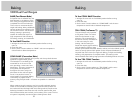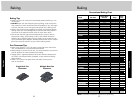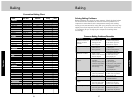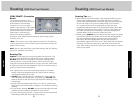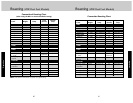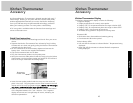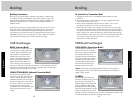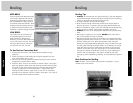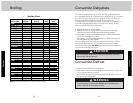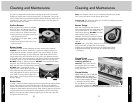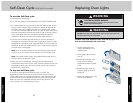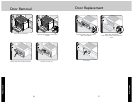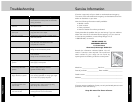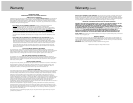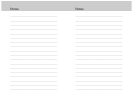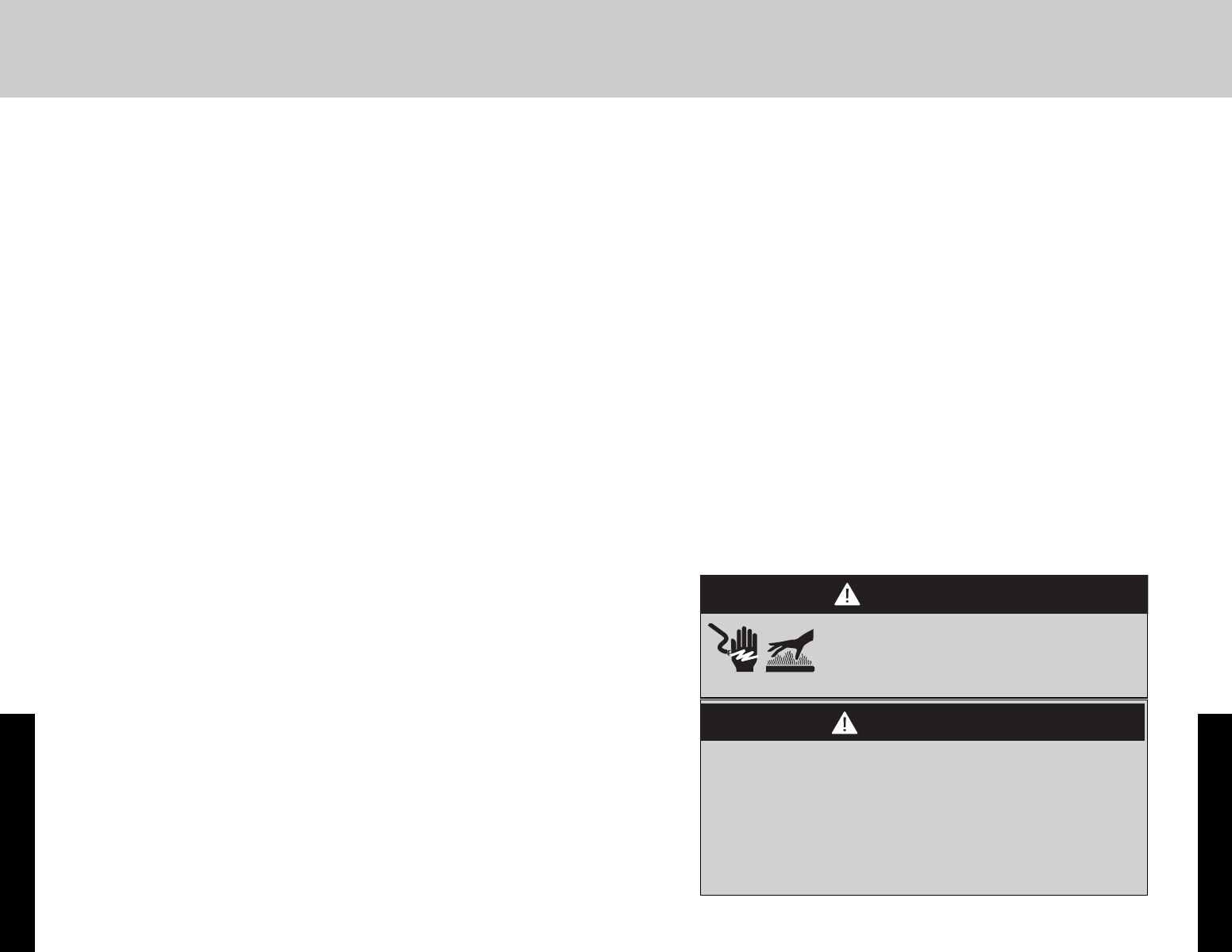
53
This oven features an automatic pyrolytic self-cleaning cycle. During
this cycle, the oven reaches elevated temperatures in order to burn-off
soil and deposits. An integral smoke eliminator helps reduce odors
associated with the soil burn-off. A powder ash residue is left in the
bottom of the oven after completion of the self-clean cycle. The door
latch is automatically activated after selecting the self-clean setting.
The latch ensures that the door cannot be opened while the oven
interior is at cleaning temperatures.
Before starting the Self-Clean cycle:
1.Remove the oven racks, and any other items/utensils from the oven.
The high heat generated during the cleaning cycle can discolor,
warp, and damage these items. DO NOT use foil or liners in the
oven. During the self-clean cycle, foil can burn or melt and damage
the oven surface.
2.Wipe off any large spills from the oven bottom and sides. NEVER
use oven cleaners inside a self-cleaning oven or on raised portions
of the door.
3.Some areas of the oven must be cleaned by hand before the cycle
begins. Soils in these areas will be baked on and very difficult to
clean if not removed first. Clean the door up to the gasket, the door
frame, and up to 2 inches inside the frame with detergent and hot
water. Rinse thoroughly and dry.
DO NOT touch the exterior portions of the oven after self-cleaning
cycle has begun, since some parts become extremely hot to the
touch! During the first few times the self-cleaning feature is used,
there may be some odor and smoking from the curing of the binder in
the high-density insulation used in the oven. When the insulation is
thoroughly cured, this odor will disappear. During subsequent
self-cleaning cycles, you may sense an odor characteristic of high
temperatures. Keep the kitchen well-vented during the
self-cleaning cycle.
52
Oven Surfaces
Several different finishes have been used in your oven.
NEVER USE AMMONIA, STEEL WOOL PADS OR ABRASIVE CLOTHS,
CLEANSERS, OVEN CLEANERS, OR ABRASIVE POWDERS. THEY CAN
PERMANENTLY DAMAGE YOUR OVEN.
VDR models – Your oven features a self-clean cycle for the oven
interior. See the “Self-Clean Cycle” section for complete instructions.
Stainless Steel Parts
All stainless steel body parts should be wiped regularly with hot soapy
water after they have cooled and with a liquid cleaner designed for that
material when soapy water will not do the job. DO NOT use steel wool,
abrasive cloths, cleansers, or powders. If necessary, scrape stainless steel
to remove encrusted materials, soak the area with hot towels to loosen
the material, then use a wooden or nylon spatula or scraper. DO NOT use
a metal knife, spatula, or any other metal tool to scrape stainless steel.
DO NOT permit citrus or tomato juice to remain on stainless steel
surface, as citric acid will permanently discolor
stainless steel. Wipe up any spills immediately.
Glass Surfaces
Clean with detergent and warm water. Glass cleaner can be used to
remove fingerprints. If using glass cleaner ammonia, make sure that it
does not run down on exterior door surface.
Broiler Pan and Grid
Clean with detergent and hot water. For stubborn spots, use a soap-
filled steel wool pad.
Oven Racks
Clean with detergent and hot water. Stubborn spots can be scoured
with a soap-filled steel wool pad.
Product Care
BURN OR ELECTRICAL SHOCK HAZARD
Make sure all controls are OFF and oven is COOL
before cleaning. Failure to do so can result in burns
or electrical shock.
Product Care
Self-Clean Cycle
VDR Dual Fuel models only
Cleaning and Maintenance
WARNING
CAUTION



